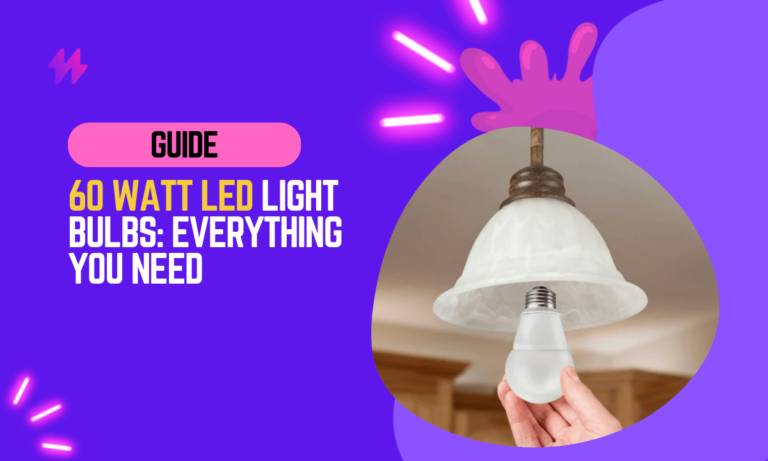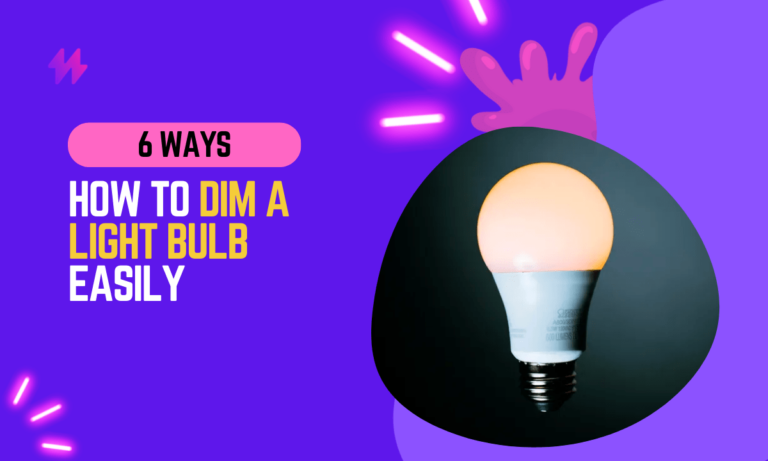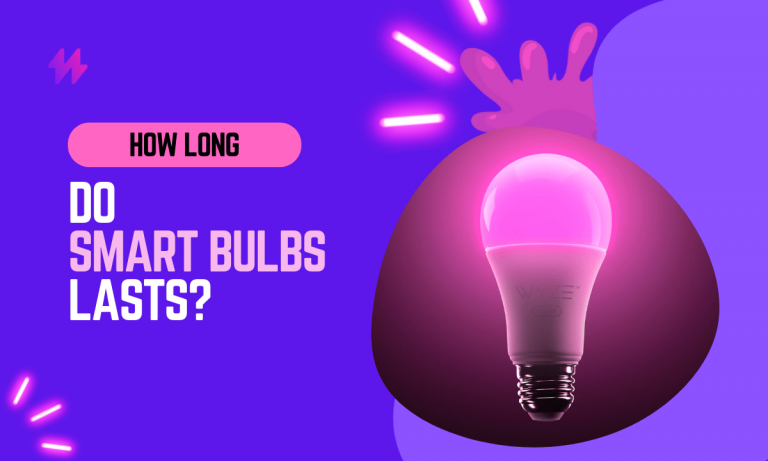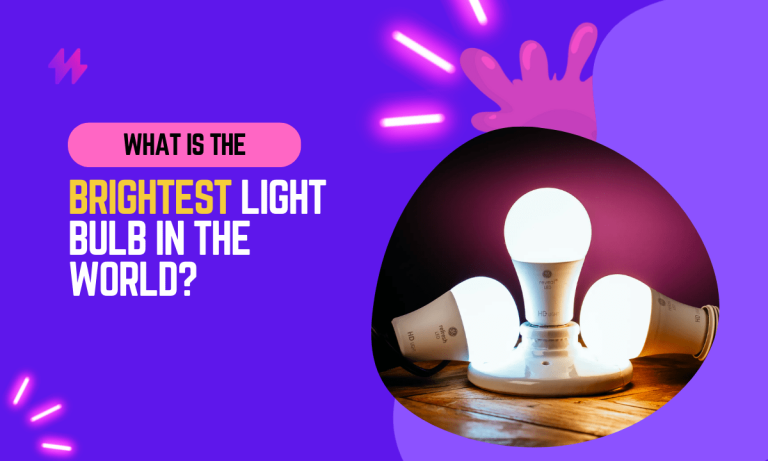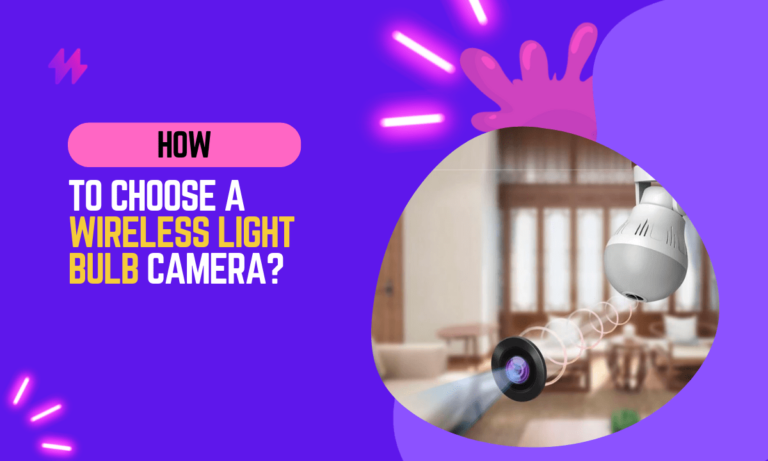Do Smart Bulbs Work Without WiFi?
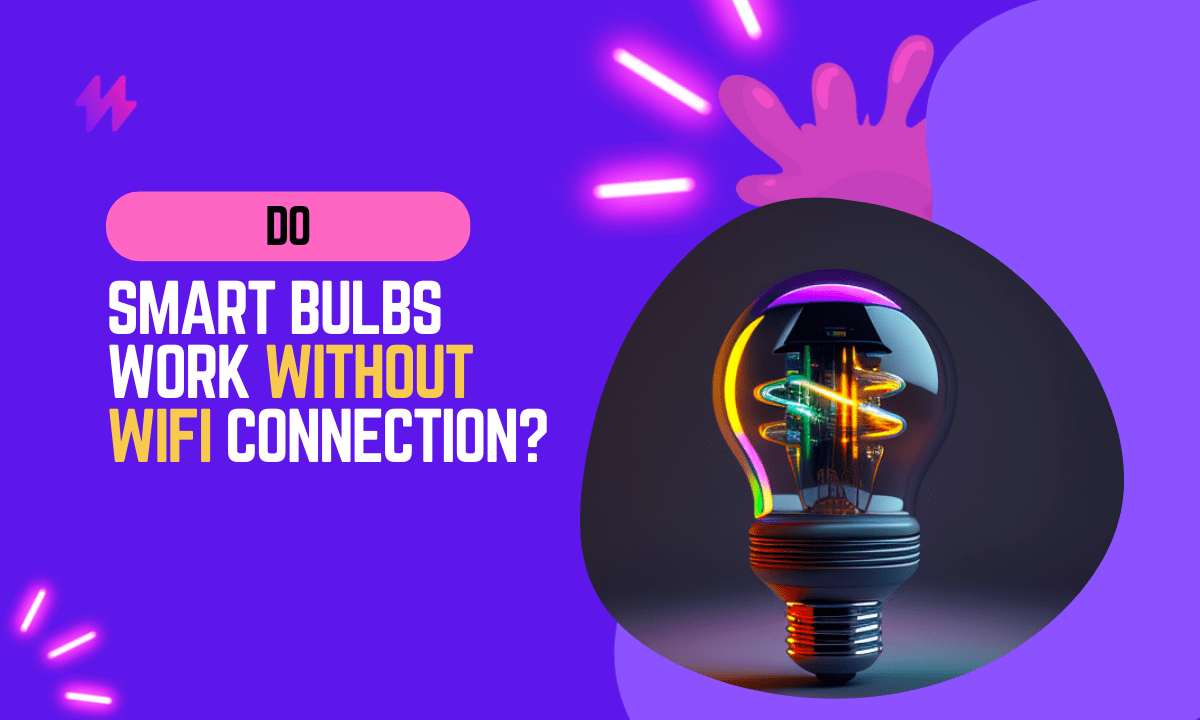
Smart bulbs have become a popular choice for home lighting due to their convenience and versatility. These bulbs can be controlled and configured through a smartphone app or voice assistants, allowing you to easily change their color, and brightness, and even schedule them to turn on or off at certain times.
However, many people are wondering whether smart bulbs work without WiFi. In this blog, we will delve into the different types of smart bulbs available and how they function without WiFi.
Smart bulbs have become a popular choice for home lighting due to their convenience and versatility. These bulbs can be controlled and configured through a smartphone app or voice assistants, allowing you to easily change their color, and brightness, and even schedule them to turn on or off at certain times. However, many people are wondering whether smart bulbs work without WiFi. In this blog, we will delve into the different types of smart bulbs available and how they function without WiFi. Even without a Wi-Fi connection, certain smart light bulbs can still operate using a local Wi-Fi network or through alternative methods like Bluetooth. It’s essential to understand the limitations of these internet-connected home appliances, as features may vary significantly between different light bulbs and their respective technologies.
Understanding How Smart Bulbs Can Function without WiFi: Key Insights
Yes, it is possible to use smart bulbs without a WiFi connection. There are several types of smart bulbs that do not rely on WiFi to function, including Bluetooth, Zigbee, and Z-Wave bulbs. These bulbs use alternative wireless communication protocols to connect to other devices in your home and can be controlled through a smartphone app or voice assistant.
However, the functionality of smart bulbs without WiFi may be limited compared to WiFi bulbs. They may not have as many customization options or be able to connect to as many smart home devices.
Must read guide: What is an E26 Bulb and How do they look?
Smart bulbs can continue to enhance your home with LED lighting and various colors, even without a typical WiFi connection. Many bulbs, including Bluetooth and Zigbee types, can still seamlessly integrate with smart home tech, providing essential functionality that keeps your smart home appliances operational despite a power outage.
Smart Bulb Varieties: Exploring Types of Smart Bulbs

There are several types of smart bulbs available in the market, each with its own unique features and capabilities. Here are the most common types:
WiFi Smart Bulbs: These are the most common type of smart LED bulbs and they rely on a WiFi connection to function. They can be controlled through a smartphone app or voice assistants like Google Assistant or Amazon Alexa.
Bluetooth Smart Bulbs: These bulbs do not require a WiFi connection and can be controlled through a smartphone app or voice assistant using a Bluetooth connection. They have a shorter range than WiFi bulbs and can only be controlled within close proximity.
Zigbee Smart Bulbs: These bulbs also do not require a WiFi connection and use a low-power wireless communication protocol called Zigbee to connect to other devices in your home. They can be controlled through a smartphone app or voice assistant and have a longer range than Bluetooth bulbs.
Z-Wave Smart Bulbs: Similar to Zigbee bulbs, these bulbs use a different wireless communication protocol called Z-Wave to connect to other devices in your home. They can also be controlled through a smartphone app or voice assistant and have a longer range than Bluetooth bulbs.
Also read: How To Reset Smart Bulb in 4 Easy Steps
Various smart bulb options are available in today’s market, catering to different preferences and needs. With the capability to easily adjust lighting settings, both versatility and functionality make smart light bulbs an attractive choice for modern homes and smarter living. Additionally, smart bulb makers have developed advanced efficient solutions like WiFi Matter bulbs and Zigbee connections. These innovations ensure that consumers can still enjoy control over their lightbulbs, even in the absence of a stable Wi-Fi network.
Understanding How Smart Bulbs Function Without WiFi: A Comprehensive Guide

As mentioned above, there are several types of smart bulbs that do not require a WiFi connection to function. These bulbs use either a Bluetooth, Zigbee, or Z-Wave connection to communicate with other devices in your home.
Many consumers are curious about how these smart home products maintain their functionality without reliance on a standard Wi-Fi network. By utilizing protocols like Zigbee or Bluetooth, these light bulbs continue to provide users with the capability to adjust lighting and control smart features even when disconnected from their home’s WiFi support.
Do Smart Bulbs Work Without WiFi? Exploring Bluetooth Smart Bulbs
Bluetooth smart bulbs are the simplest type of smart bulbs and are the easiest to set up. They can be controlled through a smartphone app or voice assistant using a Bluetooth connection. The range of these bulbs is limited to about 30 feet, so they can only be controlled within close proximity.
Bluetooth smart bulbs are the simplest type of smart bulbs and are the easiest to set up. They can be controlled through a smartphone app or voice assistant using a Bluetooth connection. The range of these bulbs is limited to about 30 feet, so they can only be controlled within close proximity. For those looking to expand their options, several bulbs like the Wyze bulbs and RGB bulbs can work effectively even without a WiFi router. Understanding if do smart bulbs work without wifi should guide your purchase, especially when considering features of internet-connected home appliances and the advantages of WiFi Matter bulbs.
Zigbee Smart Bulbs: Understanding Their Functionality and Benefits
Zigbee smart bulbs use a low-power wireless communication protocol called Zigbee to connect to other devices in your home. They can be controlled through a smartphone app or voice assistant and have a longer range than Bluetooth bulbs.
To set up Zigbee bulbs, you will need a Zigbee hub, which acts as a bridge between the bulbs and your home network. The hub can be connected to your router through an Ethernet cable and will allow you to control the bulbs through a smartphone app or voice assistant.
Zigbee smart bulbs are an excellent choice for those who wish to use smart color bulbs without needing a typical WiFi connection. For users contemplating “do smart bulbs work without wifi,” understanding the various options like Wyze bulbs, RGB bulbs, and Matter bulbs can significantly enhance their experience with internet-connected home appliances.
Z-Wave Smart Bulbs: Understanding Their Functionality and Benefits
Z-Wave smart bulbs are similar to Zigbee bulbs and use a different wireless communication protocol called Z-Wave to connect to other devices in your home. They can also be controlled through a smartphone app or voice assistant and have a longer range than Bluetooth bulbs.
To set up Z-Wave bulbs, you will need a Z-Wave hub, which acts as a bridge between the bulbs and your home network. The hub can be connected to your router through an Ethernet cable and will allow you to control the bulbs through a smartphone app or voice assistant.
Must read: Do Smart Bulbs Use Electricity When Off
Z-Wave smart bulbs are indeed a fantastic option for those wanting reliable lighting solutions without a traditional WiFi connection. As smart bulb makers continue to innovate, understanding how smart light bulbs can function with local WiFi networks or alternatives like Z-Wave hubs can significantly enhance your experience as a consumer. Additionally, knowing the various features of different light bulbs – including WiFi Matter bulbs and others – can guide your decisions when purchasing smart lighting for your home.
Understanding the Pros and Cons of Smart Bulbs without WiFi
There are pros and cons to using smart bulbs that do not require a WiFi connection. Here are some of the main benefits and drawbacks:
When considering smart bulbs, it’s essential to evaluate how they function without a WiFi connection. With the right setup, several bulbs like thread bulbs can operate independently, ensuring that you can still enjoy smart lighting features even if you’re away from your wifi router.
Pros and Cons of Smart Bulbs Without WiFi: Understanding Their Benefits
No need for a WiFi connection: One of the main benefits of using smart bulbs that do not require a WiFi connection is that they can still function even if your WiFi goes down or is not available. This can be particularly useful if you live in an area with a weak or unstable WiFi signal.
Easy setup: Setting up smart bulbs that do not require a WiFi connection is generally easier than WiFi bulbs, as you don’t have to worry about connecting them to your home network. All you need to do is install the bulb and pair it with your smartphone or voice assistant using Bluetooth, Zigbee, or Z-Wave.
Longer range: Smart bulbs that use Zigbee or Z-Wave have a longer range than Bluetooth bulbs, meaning you can control them from further away. This can be particularly useful if you have a large home or if you want to control the bulbs from multiple rooms.
Smart bulbs that do not require a WiFi connection offer an appealing alternative for those seeking consistent lighting options. These bulbs allow you to enjoy vibrant color bulbs while sidestepping the hassle of fluctuating WiFi connection info, making them an excellent choice for anyone looking to enhance their home lighting setup without dependence on a traditional internet facility.
Drawbacks of Using Smart Bulbs without WiFi: Pros and Cons
Limited control: Smart bulbs that do not require a WiFi connection are generally less feature-rich than WiFi bulbs. They may not have as many customization options or be able to connect to as many smart home devices.
Dependency on the hub: If you are using Zigbee or Z-Wave bulbs, you will need a hub to connect them to your home network. This can be an additional cost and may require some technical know-how to set up.
Limited voice control: Smart bulbs that do not require a WiFi connection may not be compatible with as many voice assistants as WiFi bulbs. For example, you may not be able to control them with Amazon Alexa or Google Assistant unless you have a compatible hub.
When choosing lightbulbs for your home, it’s important to recognize that smart bulbs with limited connectivity may not fully replace standard options. While these alternative bulbs can provide useful features, like controlling color bulbs locally without WiFi, their range of functionalities can often fall short compared to traditional WiFi-enabled models.
Final Thoughts on Smart Bulbs Without WiFi: Pros and Cons
In conclusion, the functionality of smart bulbs without WiFi depends significantly on the design and capabilities of the specific bulb. Most smart bulbs are equipped with features that require an internet connection to fully utilize their capabilities, such as remote control via smartphone apps, voice command compatibility, and integration with home automation systems. However, many smart bulbs can still operate without a WiFi connection, albeit with limited functionality. For instance, without WiFi, users may not be able to adjust the settings or control the bulb remotely, but they can still use the basic features like turning the lights on or off through traditional means such as a physical switch or, in some cases, via Bluetooth connectivity.
Furthermore, the dependence on WiFi highlights the need for consumers to consider their specific needs and the infrastructure of their homes before investing in smart lighting solutions. For those living in areas with unreliable internet service or for those who prefer not to depend entirely on digital controls, choosing smart bulbs that offer both WiFi and alternative control options like Bluetooth can provide a practical compromise. It allows for the convenience of advanced features when the internet is available, while still maintaining basic control during outages. As technology continues to evolve, the market is seeing an increase in smart lighting products designed to offer greater flexibility and independence from constant internet connectivity. This adaptability makes smart bulbs an increasingly attractive option for a broad range of consumers, enhancing the accessibility and appeal of home automation technologies.
Smart bulbs do work without WiFi, but the functionality may be limited compared to WiFi bulbs. If you are looking for a simple and convenient way to control your home lighting, Bluetooth smart bulbs may be the best option. Ultimately, the type of smart bulb that is right for you will depend on your specific needs and preferences.
Do Smart Bulbs Work Without WiFi | Alternatives to WiFiDependent Smart Bulbs
Smart bulbs have gained popularity, but many wonder, Do Smart Bulbs Work Without WiFi? The answer lies in alternatives like battery-powered systems. These bulbs operate independently from your home network and can be powered by a solar or battery system. Features such as smartphone control and color options can still be accessed, even if they may never rival the sophistication of WiFi-enabled bulbs. While certain lights might require a direct connection, a normal lightbulb can be replaced with these alternatives without missing functionality. Individuals seeking to control a few lights should consider options that function without an internet thing or carrier phone internet. A simple lightswitch can suffice for operating these bulbs effectively.
Do Smart Bulbs Work Without WiFi | BatteryPowered Smart Bulbs: Features and Usage
Battery-powered smart bulbs offer a practical solution for those questioning if smart bulbs work without WiFi. These bulbs rely on a solar or battery system for energy, making them independent from traditional WiFi networks. Users can control these bulbs via Bluetooth or dedicated apps, eliminating the need for an internet connection. These bulbs never lose functionality, even during power outages, ensuring consistent lighting without relying on WiFi info.
Color-changing bulbs powered by batteries also provide versatility in various settings. Many of these smart lights enhance mood and ambiance without the constraints of WiFi connectivity. Battery-powered options never restrict users to specific locations, as they can be easily placed anywhere. This makes them ideal for outdoor use or areas where electrical outlets are limited, proving that smart lighting can be effective even without a WiFi connection.
Smart Bulbs with Hub Support: How They Work
Hub-supported smart bulbs offer a seamless way to control your lighting without relying solely on WiFi. These bulbs connect to a central hub, allowing users to manage multiple devices through a single interface. This setup negates the need for constant internet access, answering the question, “Do Smart Bulbs Work Without WiFi?” Hub-supported systems can incorporate energy-efficient features that optimize performance, even in a solar/battery system. Traditional bulbs never possess such smart functionalities, particularly when it comes to color bulbs, which can be customized based on mood or occasion.
The central hub acts as a bridge between your smart bulbs and your control devices, such as smartphones or voice assistants. This allows users to enjoy a more stable connection that does not depend on their home WiFi network. For those pondering the query, “Do Smart Bulbs Work Without WiFi,” the answer is affirmative with the help of a hub. Bulbs in this configuration exhibit enhanced compatibility, enabling you to take advantage of advanced automation features that standard lighting options never offer. This makes hub-supported smart bulbs an appealing choice for individuals looking to upgrade their home lighting system without the limitations of WiFi dependency.
Comparison of Smart Bulbs Without WiFi
Understanding how various smart bulbs operate without WiFi is essential for making an informed choice. Do Smart Bulbs Work Without WiFi? Yes, several options are available that function effectively in offline settings. For instance, Bluetooth smart bulbs use direct pairing with your device, allowing you to control them without a central hub. On the other hand, Z-Wave and Zigbee bulbs rely on a compatible hub for communication, which may be ideal for users who prefer a more extensive network of connected devices. Battery-powered smart bulbs also exist, providing portability and convenience while ensuring that color bulbs shine brightly, regardless of internet access. It’s important to note that some features may be limited without WiFi, but many bulbs never compromise on basic functionality, making them reliable choices.
Bluetooth vs. Zigbee Smart Bulbs: Which is Better?
Bluetooth smart bulbs offer a convenient solution for users looking to control their lighting without relying on WiFi. These bulbs connect directly to compatible devices, allowing for easy setup and operation. However, Bluetooth-enabled bulbs can have range limitations, which may restrict their use in larger homes. Users can experience some degree of convenience through mobile apps, where they can adjust brightness and color settings. Ultimately, the question of “Do Smart Bulbs Work Without WiFi” finds a favorable answer with Bluetooth options, as they allow for local control and functionality.
Zigbee smart bulbs present a different approach, employing a mesh network that enhances connectivity. This means that as long as one device is connected to the hub, other bulbs can communicate effectively, even at greater distances. Zigbee bulbs are not just about basic on-off features; they offer extensive customization options and can integrate with various smart home devices. For users who wish to explore advanced lighting scenarios and automation, Zigbee bulbs stand out as a superior choice. The ability to control multiple color bulbs and set schedules makes them a versatile alternative in the smart lighting category.
ZWave Smart Bulbs Compared: Efficiency and Connectivity
Z-Wave smart bulbs offer a reliable alternative for those wondering, “Do smart bulbs work without WiFi?” These bulbs use a mesh network, allowing them to communicate with each other without needing an internet connection. This is particularly beneficial in homes where WiFi signals may be weak. Z-Wave technology ensures that each bulb can act as a repeater, enhancing connectivity throughout your space, making sure your lighting solution remains efficient.
While Z-Wave smart bulbs may not support the colorful effects found in some WiFi-dependent models, they excel in energy efficiency and reliability. Color bulbs may never reach the same level of compatibility with Z-Wave systems, which focus more on functional lighting than aesthetic features. For users prioritizing efficiency and dependable connectivity, Z-Wave smart bulbs present an effective solution without relying on WiFi connectivity.
Setting Up Smart Bulbs Without WiFi
Understanding whether smart bulbs can function without WiFi is crucial for anyone looking to enhance their home lighting without relying on internet connectivity. Battery-powered smart bulbs offer a versatile solution, allowing for creative placement throughout a space without the constraints of wiring or WiFi. These bulbs can maintain functionality in areas where WiFi is weak or non-existent, making them ideal for outdoor use or remote locations. Color bulbs can still provide dynamic lighting effects, enriching the atmosphere without needing an internet connection. Exploring these options answers the question: Do Smart Bulbs Work Without WiFi? The answer is a definitive yes, especially with technology designed for direct, local control.
StepbyStep Guide to Installing Bluetooth Smart Bulbs
Installing Bluetooth smart bulbs is a straightforward process. Begin by ensuring your smartphone or tablet has the appropriate app installed that is compatible with the bulbs you purchased. After selecting a compatible app, screw in the bulbs into their respective light fixtures. The bulbs should light up automatically, indicating they have power. For those wondering, “Do Smart Bulbs Work Without WiFi,” the answer is yes, as Bluetooth technology allows for direct communication between the bulbs and your mobile device.
Once the bulbs are powered on, open the app and follow the prompts to connect to the bulbs. Bluetooth pairing generally involves selecting the specific bulbs from a list provided in the app. Remember, bulbs connected via Bluetooth never require a WiFi network, making them ideal for use in areas with limited internet access. After successful pairing, you can adjust features such as brightness and color. The Bluetooth capability means you can control your smart bulbs without reliance on WiFi, enhancing convenience in your home.
Setting Up Zigbee and ZWave Smart Bulbs: A Quick Overview
Zigbee and Z-Wave smart bulbs can operate independently of WiFi, making them an excellent choice for those seeking alternatives. These bulbs connect through a dedicated hub that communicates with the devices in your home. Users can control the bulbs directly via the hub, which means you can manage lighting even without a WiFi connection. The flexibility of using these technologies answers the question, “Do smart bulbs work without WiFi?” with a clear yes, ensuring that color bulbs and other features remain accessible.
The setup process for Zigbee and Z-Wave smart bulbs involves a few straightforward steps. Begin by installing the compatible hub, which never requires an internet connection to function. After pairing your bulbs with the hub, you can use a dedicated app on your smartphone or tablet to manage them. Understanding how these systems work ensures that you maximize functionality while enjoying the benefits of smart lighting. With this knowledge, you can confidently explore whether smart bulbs meet your needs.

